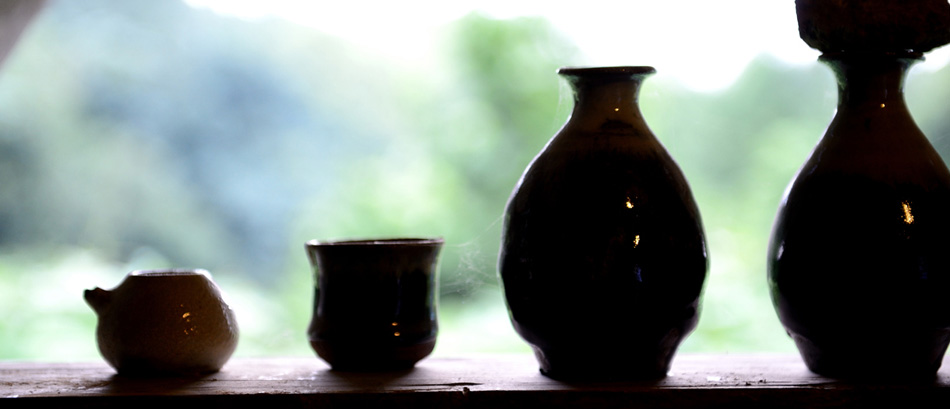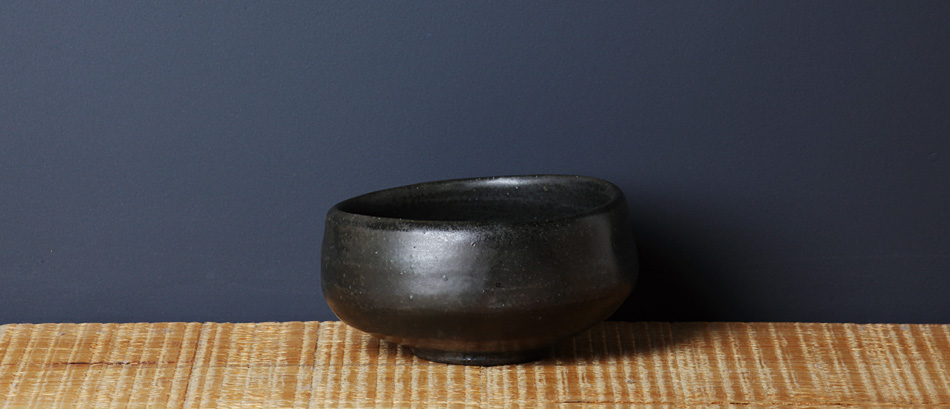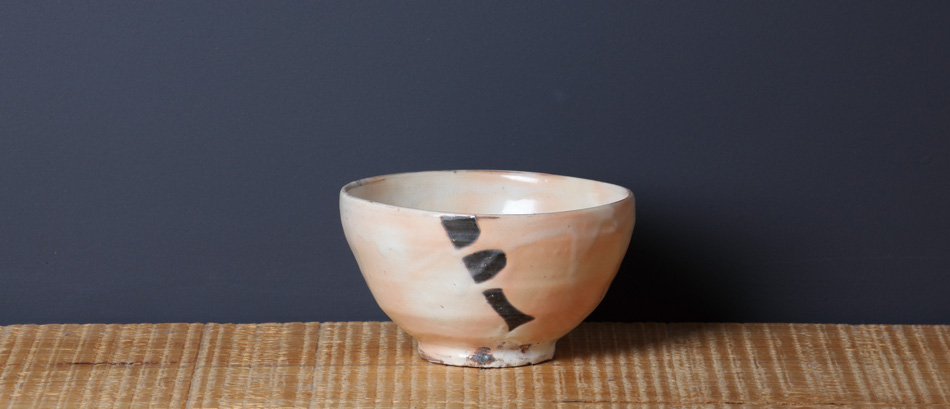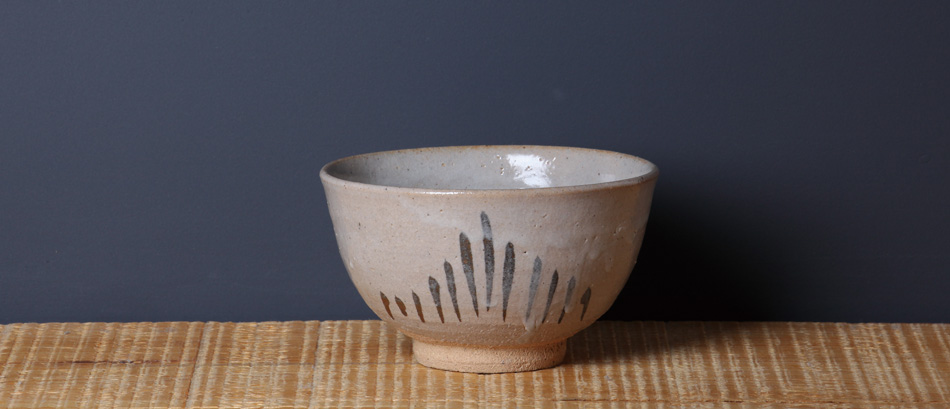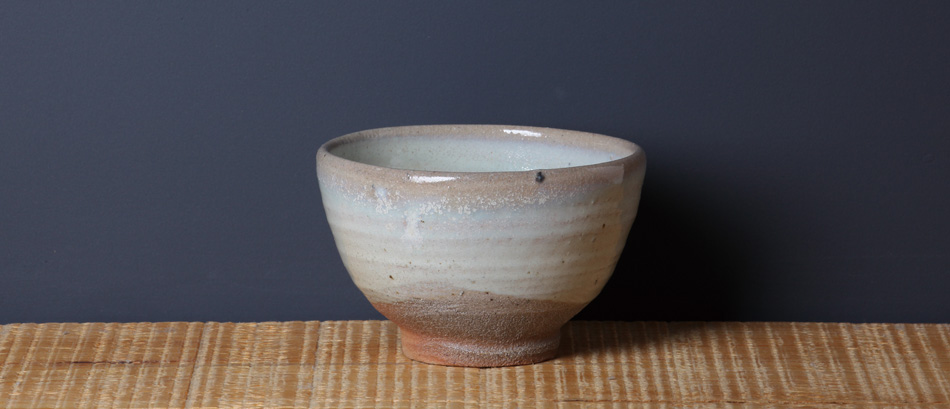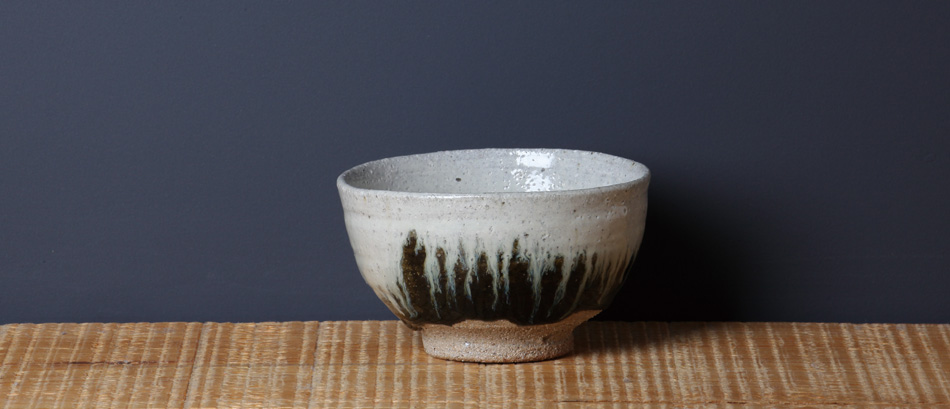KARATSU CERAMIC WARE
| The many faces of Karatsu ware were fostered in a long history of seasoned artistry as well as in the modern sensibilities of today's ceramic artists. | 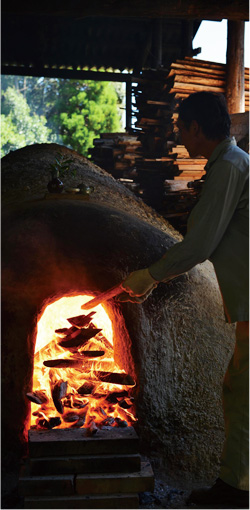 |
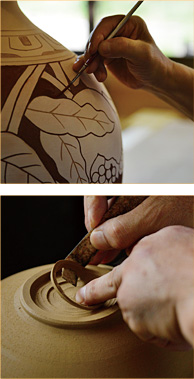 |
|
There are various theories regarding the origin of Karatsu ware, but it is generally accepted that it finds its origin in the area surrounding Kishidake Castle, under the auspices of the Hata family, from the late Muromachi period and into the Momoyama period. Later, following Toyotomi Hideyoshi's campaigns into Korea, many Korean potters were brought back to Japan, and proceeded to build kilns throughout the region, which further expanded the production of Karatsu ware. With the introduction of the climbing kiln, the kickwheel, and glazing technology from the Korean peninsula, the variety and style of Karatsu ware multiplied and was traded extensively throughout the country, becoming representative of Japanese ceramics. For example, in western Japan, the word for ceramic ware became “Karatsumono” (Karatsu ware). There is an old saying in the ranking of tea bowls: “First Ido, second Hagi, third Karatsu”. There are many examples of famous Karatsu teabowls in the tea ceremony, and this popularity can be seen in the building of the Karatsu domain's “Goyogama”, or domain-run kiln for tea ceramics during the Edo period. Later, Karatsu ware fell into decline after losing the patronage of the Karatsu domain, but was revived by Nakazato Muan in the 20th century. Muan was subsequently awarded the title of Living Cultural Asset for his role in reviving traditional Karatsu pottery techniques and rejuvenating the Karatsu ceramic tradition. Currently there are over 70 kilns operating in the Karatsu area. Each kiln exhibits its own unique style, based on the techniques passed down through Karatsu's long history, and each artist's particular approach and sensibility. This diverse expression, fostered in tradition and innovation, is the essence of Karatsu ware's charm. |
||
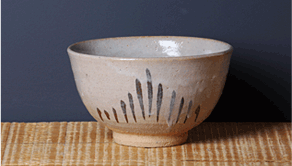 E (BRUSH DECORATED) KARATSU
Brush decorated Karatsu refers to ware that is produced by applying decorative iron pigment brushwork over a comparatively low iron clay body, and glazing with a thin layer of clear ash glaze or clear feldspar glaze. Common motifs include grasses, trees, birds, flowers, human figures, lines, geometric figures, and other objects of common experience to the potter, usually painted by brush or finger. The simple, rustic brushwork expresses both sensitivity and power in its execution. The most popular style of Karatsu ware, particularly seen in plates, small food dishes, and bowls. |
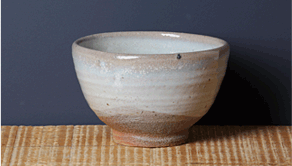 MADARA (MOTTLED) KARATSU
Ware glazed with an opaque high silica glaze, often utilizing rice straw ash, which melts and interacts with the iron in the clay body and/or the fly ash from the pinewood kiln fuel, resulting in a milky surface mottled with spots or areas of blue and black. Also referred to as White Karatsu ware. The Kishidake area kilns of the 16th century are believed to be the originators of Madara Karatsu, and many potters of today seek to reproduce the look of ware from this period. Madara Karatsu chawan (tea bowls) and choko (sake cups) are quite popular. |
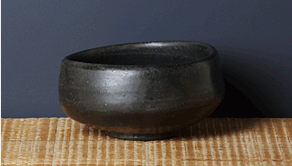 KURO (BLACK) KARATSU
Ware with a glaze containing a high percentage of iron. Kuro Karatsu is now produced by many kilns, and there are various techniques for its production, among them the application of a black slip to the ware, or crushing stones of high iron content and mixing them with and ash glaze to produce a black glaze which is applied to the ware. Depending on the iron content and the of the materials and the amount of oxygen introduced during the firing, resulting colors can range widely from amber to rust to blackish brown, but they are still all referred to as Kuro Karatsu. Sake cups, spouted bowls, and plates are all popular forms for Kuro Karatsu. |
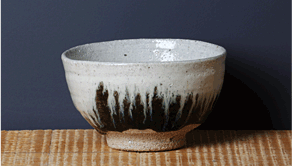 CHOSEN (KOREAN) KARATSU
Chosen Karatsu refers to ware that has been glazed with both a high iron ash glaze (black to amber) and a rice straw ash glaze (white), applied separately top/bottom or left/right on the ware. The contrast of white and brown glazes is quite striking, and the multihued waterfall effect of white, blue, purple, and yellow where the glazes melt together and flow is a defining characteristic of Chosen Karatsu ware. These changes which occur on the surface of the ware are unpredictable and reminiscent of natural landscapes. In the world of tea ceremony these landscapes are treasured, consequently there are many Chosen Karatsu mizusashi (water containers), hana ire (flower vases), tokkuri (flasks), etc. used as tea implements. |
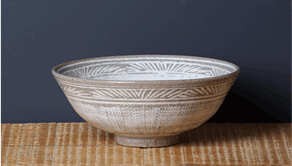 MISHIMA (STAMP/SLIP INLAY) KARATSU
Mishima ware is produced by the application of patterns or other designs via stamps or carving to leather hard ware, which is followed by a layer of white slip. The white slip is then wiped or scraped off, revealing the inlay design, and a thin layer of clear feldspar or ash glaze is applied. Production of this style of Karatsu ware began during the Edo period. Mishima Karatsu is named after the folk tradition of the Korean Yi Dynasty Mishima technique. The Mishima technique can be seen in many pottery centers of Japan, and many Mishima chawan (tea bowls) and other chaki (tea wares) are in use. |
 KOHIKI (WHITE SLIPWARE)
Kohiki ware is produced by applying a white slip over a leather hard high iron clay body. After drying, a thin layer of clear feldspar or ash glaze is applied. Kohiki was one of the pottery techniques used for Korean Goryeo period teabowls, and although there are many famous old Korean pieces, there are no examples of Kohiki in old Karatsu ware. Kohiki has come to be incorporated into Karatsu ware, but it is a relatively recent occurance. |

